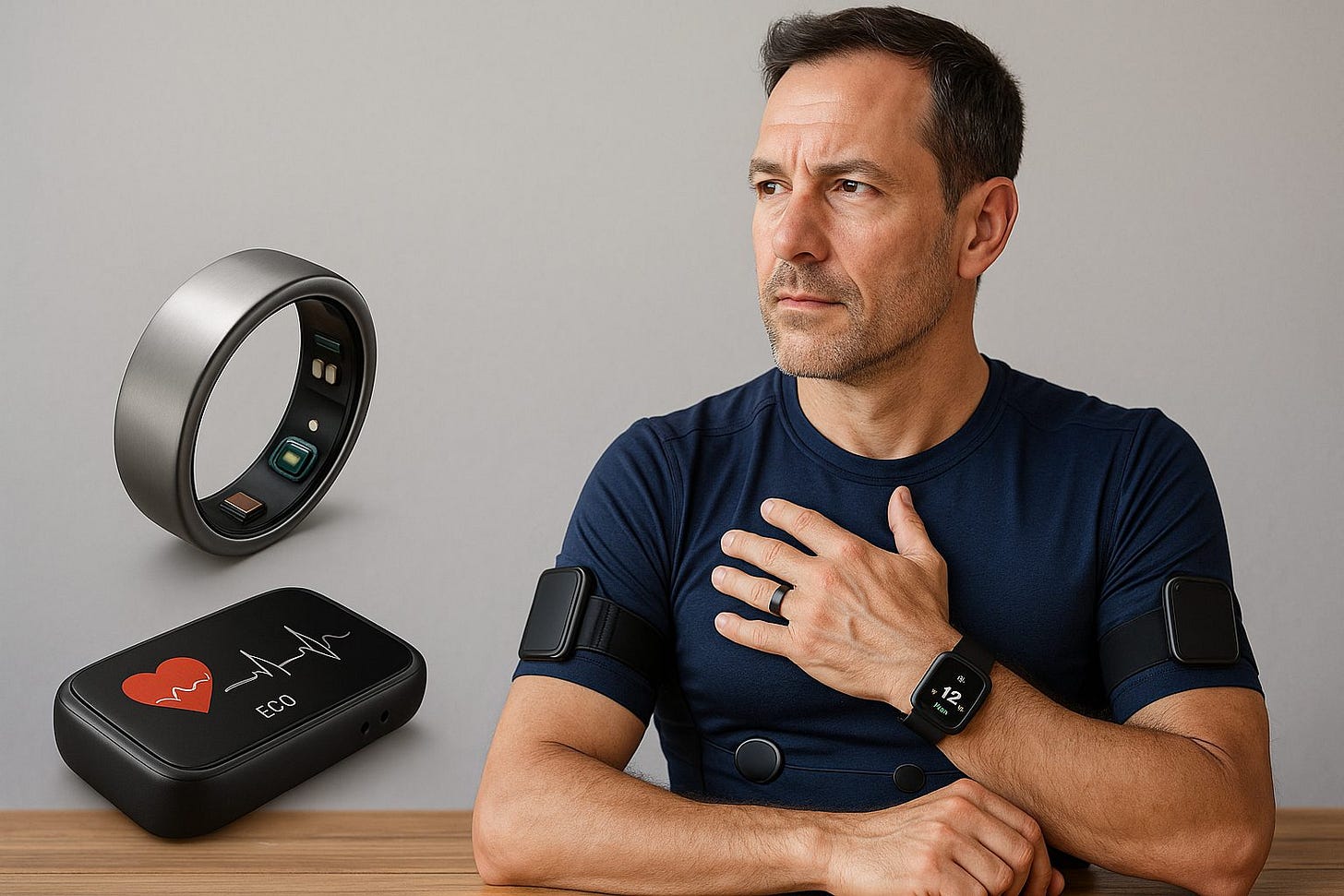7 Wearables That Help You Track Aging—And Actually Do Something About It
From rings that measure your biological age to smart garments that optimize longevity—these seven devices don’t just count steps, they help you age smarter 🕰️
Feeling like your watch is just tallying steps? Time to level up. I think we're entering a golden age of wearables—where subtle sensors meet smart software, and suddenly your gear is whispering secrets about your biological age. Not just your age by years, but how well your cells are holding up against time. And guess what? Some of these devices don't just track—they nudge you toward healthier habits. Ready to feel younger? Let's dive in.
1. Oura Ring Gen 4 / Gen 3 – Sleep, HRV & Biological Age Insights
The Oura Ring slipped into vogue for its elegant design and high‑frequency PPG sensors. It tracks sleep stages, heart rate variability, resting heart rate, body temperature—and even calculates cardiovascular age and resilience over time.
Over the past year, users praise it for transforming health habits: “it has become an indispensable part of the author's routine.” Most importantly for aging, tracking HRV and recovery patterns gives you early warning signs before health dips—actionable intel, not just data.
2. Ultrahuman Ring Air – Data‑Heavy Biometric Explorer
Built in India by Ultrahuman Healthcare, this ring dives deep into PPG, activity, sleep, and even circadian rhythms, offering actionable suggestions—like when to cut caffeine.
It's a bit more "hardcore" than Oura: squared design, open‑data approach, and no subscription required unless you want extras. If you're the kind who geeks out on granular biometrics, this one is for you.
3. Whoop 5.0 / MG – Healthspan Over Lifespan
With Cristiano Ronaldo backing it, Whoop 5.0 and MG bring advanced metrics with a focus on healthspan, not just lifespan.
They offer Healthspan with Whoop Age, on‑demand ECG, and blood‑pressure insights. The idea? Connect daily choices—like sleep or workouts—with long‑term wellness. Critics note the subscription model and dense app as drawbacks, but fans say the health‑age metric is surprisingly compelling.
4. Samsung Galaxy Ring – Energy & AGEs Tracking
Hot off Samsung's launch pad, the Galaxy Ring tracks movement, sleep, heart & respiratory rates, menstrual cycles—and introduces an AI‑powered Energy Score.
Aiming squarely at overall wellness, its ability to monitor AGEs (advanced glycation end‑products) means it actually tracks metabolic aging—a first in consumer wearables. Want to know if your glucose spikes are ageing you? This ring helps.
5. Empatica E4 (Embrace2) – Clinical‑Grade Stress & HRV
Empatica, a spinoff from MIT Media Lab, offers medical‑grade bands like Embrace2 and E4 that track HRV, skin conductance, temperature, and movement.
They're used in clinical research and even cleared by FDA as seizure alert devices. For aging, stress resilience is key—and E4 lets you monitor autonomic recovery, an important biomarker of physiological aging.
6. Huawei Watch 5 – Fingertip Health Scan
New for 2025, the Huawei Watch 5 (46 mm or 42 mm) packs in an X‑Tap sensor that performs heart rate, ECG, respiratory and SpO₂ scans with one tap.
It also boasts 4–11 days battery life, making it ideal for long‑distance tracking. For aging, consistency matters—and the Watch 5 helps you catch irregular rhythms or respiratory dips that could hint at lifestyle-related wear.
7. Hexoskin Smart Shirt – Full‑Body, Real‑Time Insight
Not a ring or wristband, but a smart shirt with embedded sensors tracking EKG, HRV, breathing rate, activity and cadence.
It's been used by athletes, astronauts—and increasingly, health researchers. For aging, longitudinal trends matter; Hexoskin's advantage is whole‑day continuous sensing, which can reveal how daily life impacts long-term physiological wear.
Why These Matter for Aging 🧬
Tracking steps is fine. Tracking biomarkers of aging? That's powerful. You're measuring cellular stress, metabolic change, resilience—all active predictors of biological age.
Whether it's AGEs, telomeres, HRV variability, oxidative stress—these wearables give you a biological age snapshot, and most importantly, can track if lifestyle changes (sleep, diet, stress) move that needle.
What to Look For – Key Features Table
Feature: Why It Matters
HRV & ECG: Shows stress/recovery balance—core to longevity
Sleep Stages: Poor sleep = faster aging; ring + watch combo helps
Biomarker Calculations: Age scores, AGEs, healthspan indices—contextual tweaks
Continuous & Comfortable Wear: Plain rings, shirts → consistent data, no fuss
Actionable Coaching: Suggestions = behavior change, not just numbers
Also read: 6 Wearables That Track Your Biological Age (and How To Use Them Wisely)
Final Thoughts & CTA
I think if you're serious about aging well, start simple: Oura or Galaxy Ring gives powerful insights without overwhelm. Want deep data? Whoop and Ultrahuman are next‑level. Need clinical accuracy? Empatica and Hexoskin deliver.
What did you feel your biological age was before tracking? Curious to hear what shifts when you start tracking. Why not pick a ring and monitor for 30 days—then revisit this list?
Let's make aging optional—one tracked biomarker at a time.


